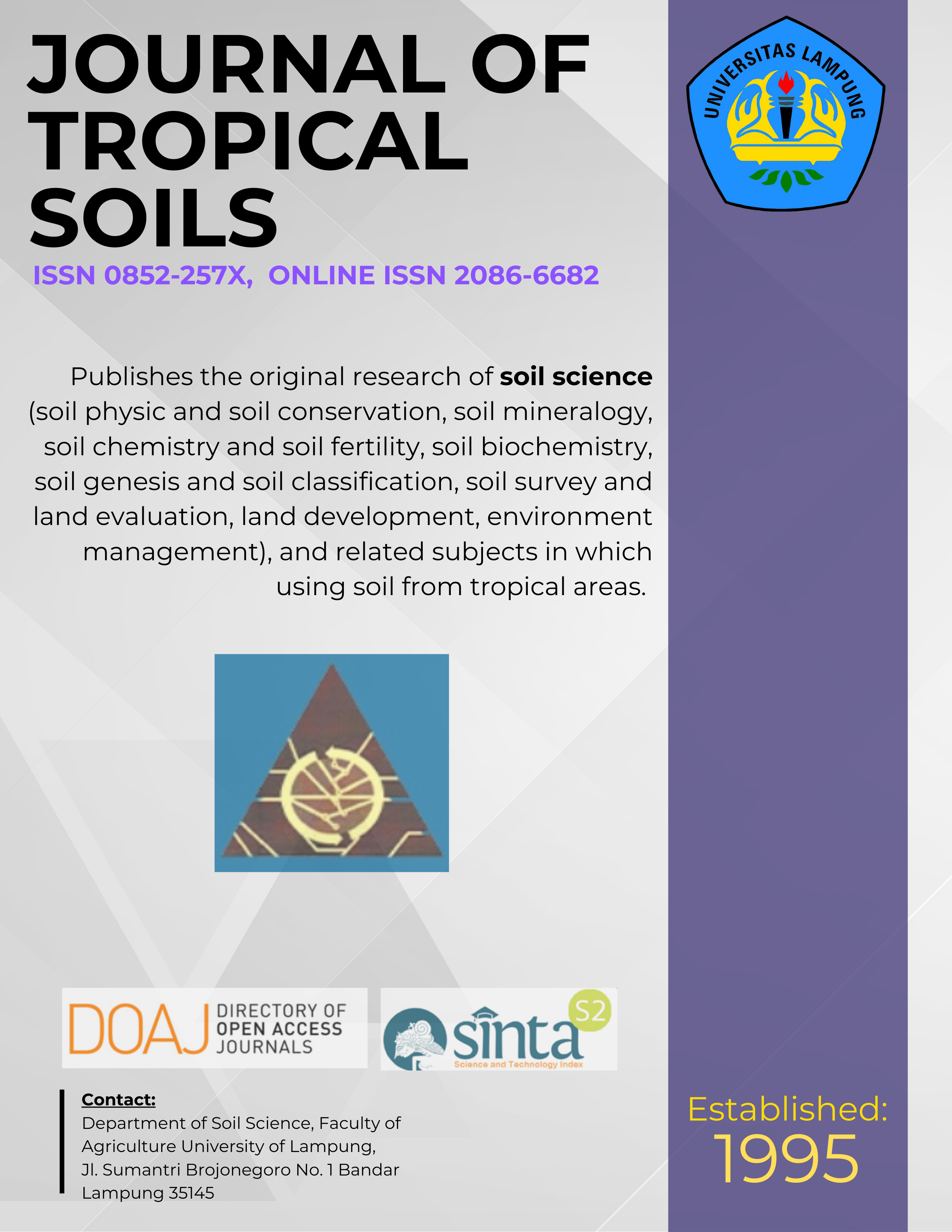Interaction of Paddy Varieties and Compost with Flux of Methane in Tidal Swampland
Main Article Content
Abstract
Varieties and organic materials have a very important role to the flux of methane (CH4) on paddy cultivation, especially on wetlands. Purpose of this research to determine the amount of methane emissions that released from paddy cultivation in acid sulphate soils with the use of different varieties and paddy straw composting. Acid sulfate soil samples taken Experimental Farm Swampland Agricultural Research Center (BALITTRA), Tanjung Harapan, District Alalak, Barito Kuala, South Kalimantan. This research uses Randomized Complete Design of two factors. The first factor is the use of paddy varieties and the second factor is the use of paddy straw compost. Research shows that there is a very real interaction between the two factors. Treatment varieties Inpara 3 + without paddy straw compost releases CH4 flux most low at 0,030 mg.m-2.day-1, while treatment Inpari 30 + paddy straw compost 5 Mg. ha-1 release most CH4 flux is 0.571 mg. m-2.day-1.
Downloads
Download data is not yet available.
Article Details
Section
Articles
License for Authors
Authors who publish with this journal agree to the following terms:
- Authors retain copyright and grant the journal right of first publication with the work simultaneously licensed under a Creative Commons Attribution License that allows others to share the work with an acknowledgement of the work's authorship and initial publication in this journal.
- Authors are able to enter into separate, additional contractual arrangements for the non-exclusive distribution of the journal's published version of the work (e.g., post it to an institutional repository or publish it in a book), with an acknowledgement of its initial publication in this journal.
- Authors are permitted and encouraged to post their work online (e.g., in institutional repositories or on their website) prior to and during the submission process, as it can lead to productive exchanges, as well as earlier and greater citation of published work (See The Effect of Open Access).
License for Regular Users
Other regular users who want to cite, distribute, remix, tweak, and build upon author’s works, even for commercial purposes, should acknowledge the work’s authorship and initial publication in this journal, licensed under a Creative Commons Attribution License.
How to Cite
Interaction of Paddy Varieties and Compost with Flux of Methane in Tidal Swampland. (2017). JOURNAL OF TROPICAL SOILS, 21(3), 179-186. https://doi.org/10.5400/jts.2016.v21i3.179-186

